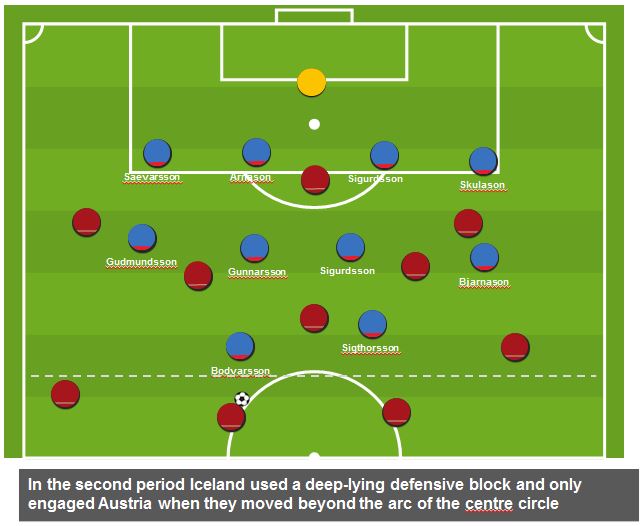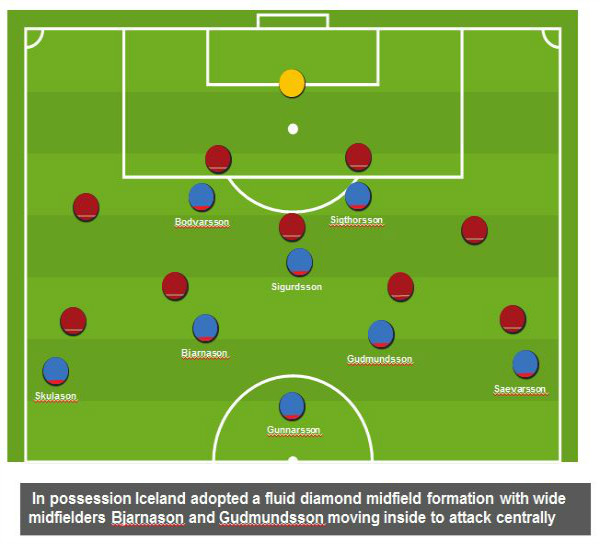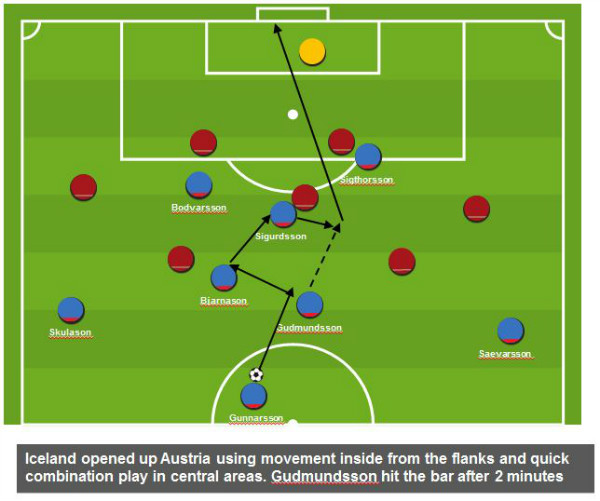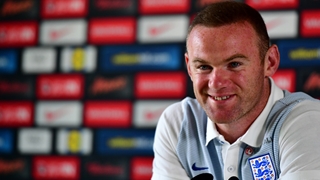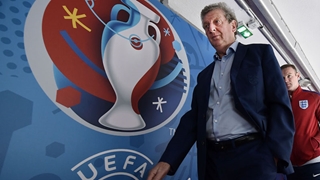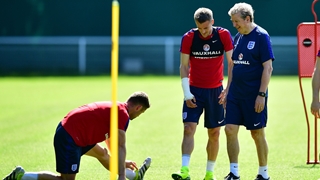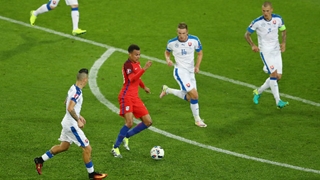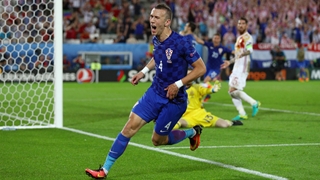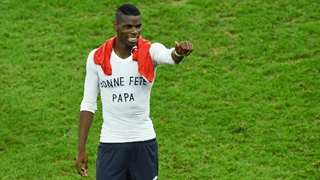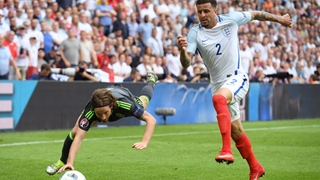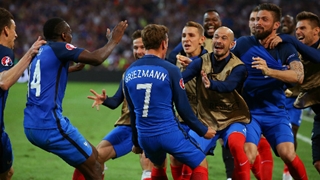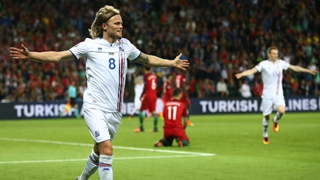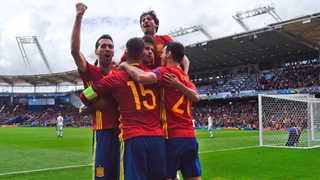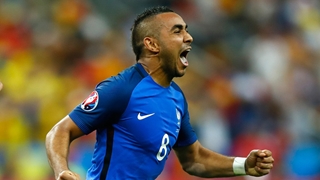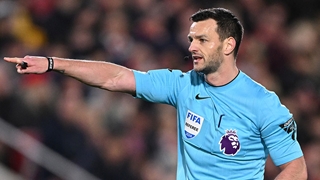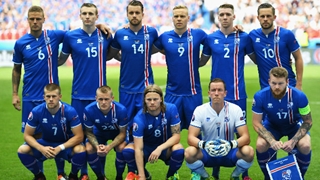
England face Iceland in the last 16 of Euro 2016 on Monday evening after Lars Lagerback’s side defeated Austria on Wednesday to qualify from Group F.
Here, Peter Glynn FA Education content Editor looks at how Iceland performed in the 2-1 win, highlighting how Roy Hodgson’s men will face both familiar and different threats when the two sides face at the Stade de Nice.
1) A familiar challenge
Iceland know better than most what is required to defend for long periods of international football matches. In their opening two games at Euro 2016 – against Portugal and Hungary – the longer the contests went on, the further back Lars Lagerback’s side dropped towards their own penalty area. And such was the case in Wednesday evening’s dramatic 2-1 victory over Austria.
For much of the second period, Iceland retreated all 10 outfield players into their own territory and only engaged the opposition as they moved beyond the arc of the centre circle into the attacking half.
Such a deep-lying defensive arrangement allowed Iceland to reduce any space behind their backline and challenged Austria to try and find a route through the congestion of bodies ahead of them.
With Iceland’s twin strike force of Kolbeinn Sigthorsson and Jon Dadi Bodvarsson instructed to drop and screen any forward passes into deep-lying midfielder, Julian Baumgartlinger, Austria’s back players were afforded a huge volume of possession.
Austria’s central defenders routinely found themselves in possession 10 yards inside Iceland’s half without any pressure on the ball.
Such a deep-lying strategy will provide England with a familiar challenge to the one faced in their three group games against Russia, Wales, and Slovakia.
2) Not just a simple 4-4-2
During defensive phases Iceland adopt a compact 4-4-2 arrangement with very little operating space afforded between the three units (defence, midfield and attack). Lagerback’s players are fully committed to their game plan and shuffle and slide in harmony with their team-mates minimising opportunities for incisive attacking play.
However, when in possession of the ball the strict arrangement is anything but rigid. Against Austria there were numerous examples of the threat Iceland’s fluid midfield movement can pose.
With less than two minutes played, the tournament debutants showed how they can spring from a traditional 4-4-2 to a midfield diamond when in possession.
With wide-midfielders Johann Gudmundsson and Birkir Bjarnason free to drift inside from the flanks and drive with the ball, Iceland regularly create overloads in central areas. With the flank pair moving inside to operate, Iceland’s most potent attacking threat Gylfi Sigurdsson can advance into a more threatening position higher up the pitch.
Iceland’s midfield four regularly attempted quick and clever combination play in central areas to progress and create goal-scoring opportunities, as shown below.
3) A twin strike force
Unlike most other teams at Euro 2016, Iceland deploy two robust centre-forwards as the focal point at the tip of their attack. Whereas other central attackers be seen drifting off the front line to link play and combine with midfielders, Iceland’s front pair operate directly up against opposition central defenders.
Both Sigthorsson and Bodvarsson bring a physical presence and aerial threat which can disarm central defenders less suited to an aerial challenge.
Having two central attacking targets allows Lagerback’s side to clip accurate longer passes from deep areas when they need to release pressure on their defence.
With the strike pair working in unison it is not uncommon to see one of the forwards flicking the ball on for the other to run behind the opposition.
In support, Iceland’s energetic midfield four have the physical capacity and endeavour to quickly join the attack and challenge for any headers and second-balls dropping into attacking midfield areas.
It is these same physical qualities and willingness to make forward runs that mean England’s next opponents remain a threat on the counter-attack.
Three Iceland players streamed forward to create a 3v2 situation in the closing moments of this game using the overload to seal victory.
4) Throw-in threat
Long throw-ins are another attacking method Iceland have at their disposal – another uncommon feature of the tournament so far – and one which they use effectively to apply pressure at every opportunity.
Captain Aron Gunnarsson takes the majority of the throw-ins in the attacking half and can deliver the ball accurately to the edges of the penalty area from almost anywhere in opposition territory.
To maximise this threat, central defender Kari Arnason often moves forward to add an additional aerial option regularly winning flick headers for Iceland’s forwards and midfielders to predict and capitalise on.
Peter Glynn is FA Education content editor and will be providing comment and analysis throughout Euro 2016.
Peter is editor of The FA’s coaching magazine, The Boot Room, and is a holder of the FA Advanced Youth Award and UEFA B coaching licence.
Follow Peter on twitter: @_peterglynn
*The views expressed in this article are those of the author and not necessarily The Football Association



